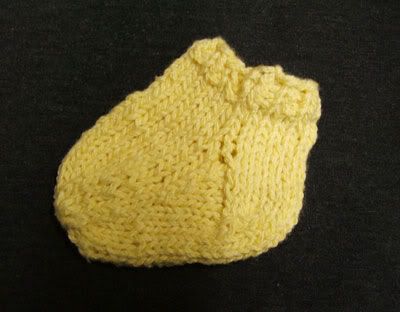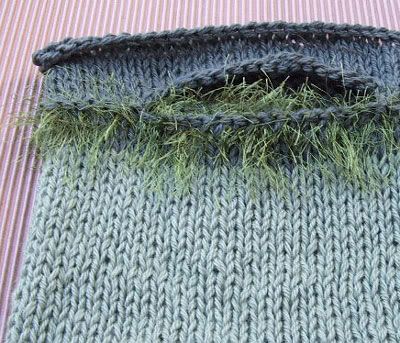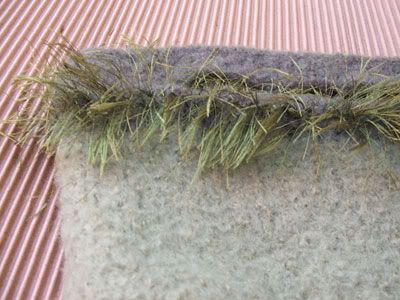Socks Education
It may not look like much to the non-knitter, or even the more experienced wielder of sticks, but to your correspondent this strange wee garment marks triumph a year in the making.

- Not actually the first of these that I've made, but the second; the initial one was given to Ms Three, who promptly put it on her doll's foot. So they're even recognisable to young children, which is gratifying.
I say a year, and that's a little misleading. It's about a year since I first attemped to knit a sock, but my efforts in the time between then and now have been rather patchy*. That my last serious attempt at hosiery is sitting in a box in Canada, unsighted by me since late February, has not helped my cause. During this time, though, I have mastered four needles well enough to happily knit this way in public, quite some progress since my first ungainly stabs, which looked like nothing so much as a drunk octopus putting up a large tent in a stiff wind, unassisted. It's one of those skills only gained by dogged persistance. It's also one of those skills that sneak up on you: one day you're holding your mouth in bizarre twists and snapping at passers-by, the next you realise bloody hell, I'm doing it without thinking about it, or swearing, even. It's a beautiful thing.
So, the socks. Those who know me well will no doubt have noticed a tendency I have to latching on to seemingly random ideas and working furiously towards making them happen. Socks were one in that particular collection, a group which includes learning Photoshop, joining the Navy, juggling and making meringue. I just decided that it would be cool to make socks. And I'm still sure it is. I worked and worked at the damn things, but kept tripping up on one little word: turn. It appears often and inexplicably in sock patterns, and refers to shaping the rounded area that cradles the heel of the foot. I couldn't work out what the hell it meant, or if I thought I had, would produce a garment that might be a snug fit for, say, a can opener or an electric drill rather than a human body. I knitted and knitted and unravelled and knitted again. Then, cross-eyed, threw it all into a bag and made another scarf.
Recently, though, whilst browsing the fabulous Knitty** site, I found a pattern for The Training Sock, which cleverly only incorporates the essential and tricky elements of stocking manufacture in a compact and efficient object. Somehow, for some reason known only to Our Lady of the Needles, it clicked for me. I turned the heel. I picked up those damn instep stitches and made them into an arch. What joy is mine!
So celebrate with me, friends; it's simply a wee sock, but the pleasure in new skills hard-won and goals attained is truly a blessing, one of the great qualities of being human. But not quite so much that I'm willing to make a pair of socks for you. So don't ask.
*I mean, if I'd sat concentrating for that amount of time on any one thing without success then I'd be in need of some serious self-examination.
** Knitty is the home of the moderately infamous and totally wonderful knitted uterus.


